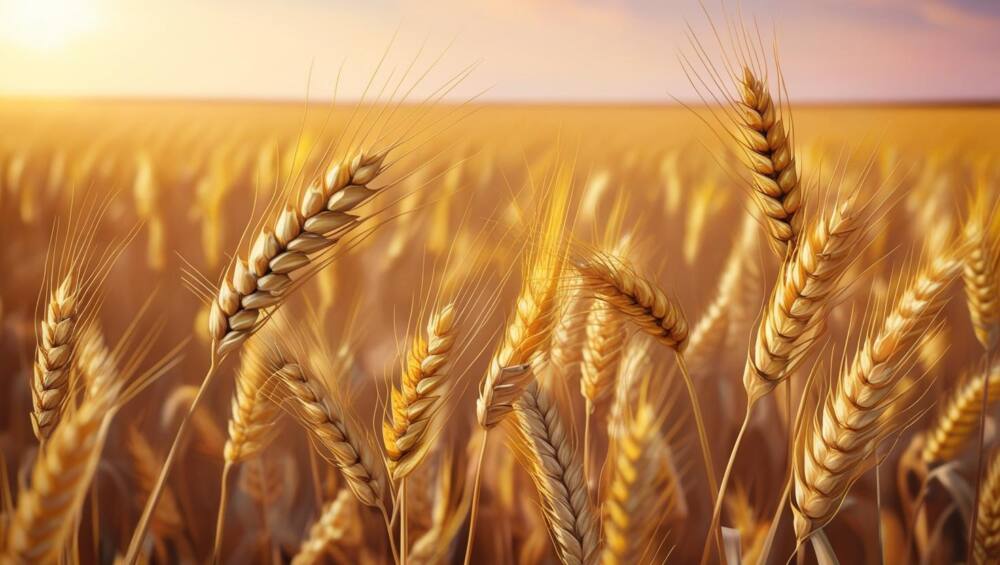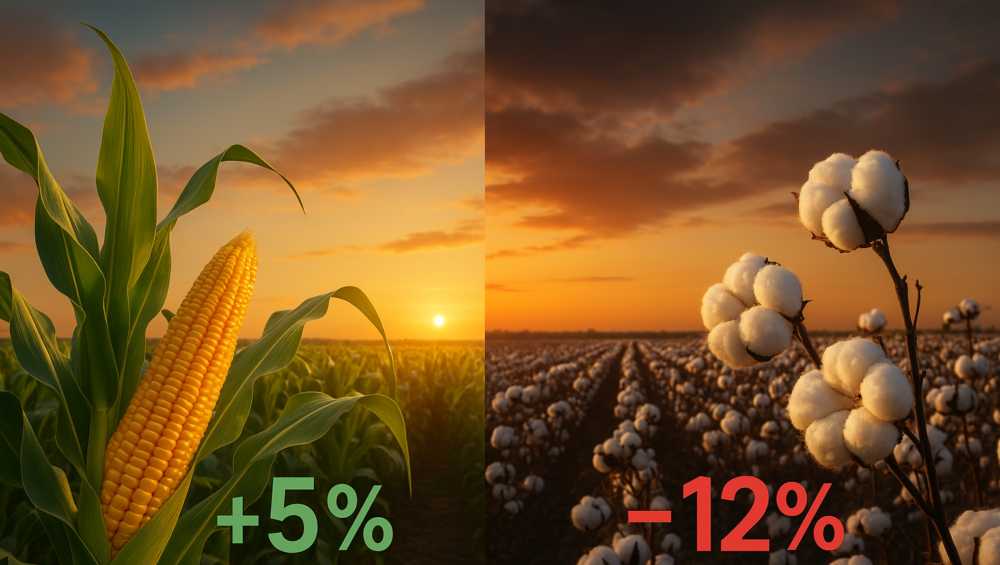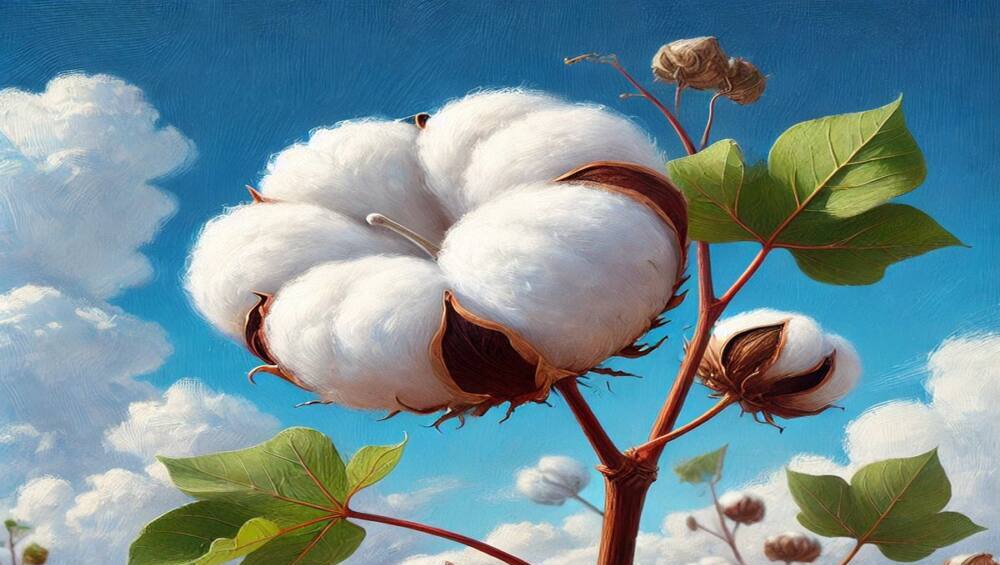Uncertainty Brews in Coffee Market Despite Potential Crop Improvement
Share This Story, Choose Your Platform!
Uncertainty Brews in Coffee Market Despite Potential Crop Improvement
Coffee traders have been watching futures rise for the last 15 months on depleted stockpiles and an uncommon horticultural issue which has confounded market forecasters. In that time, the price of coffee has risen from approximately $1.50 per pound to over $3.50. Here’s what I said in October of 2023, when the rally was in its infancy:
“Often, these rallies turn out to be selling opportunities because the drought fears were overhyped. This year, however, we would proceed with extreme caution. There is greater than usual upside price exposure going into next year due to the continuing tightness of supply, uncertainty regarding the biennial growth cycle, and ever-increasing global demand. If the 2023/24 production falls a bit short of expectations, there will be a worldwide coffee shortage.”
–CCR Brazilian Coffee Poised to Cause Market Jitters 10/17/2023
The 2023/24 crop year did fall short of expectations, and the result was a shortage which persists today. Now all eyes are on the much-debated size of the 2025 harvest, which has developed in a unique manner.
All good coffee traders follow the weather and have some understanding of botany. We’re used to crops suffering from frost in the (Southern Hemisphere) winter or lack of rain in the springtime. One of the most relied upon indicators of crop health is the flowering of the trees, which is the first sign that coffee cherries are getting ready to grow. Eventually the flowers fall off and the trees are left with plump cherries ready to be harvested.
Over the last several months, this tried-and-true metric has come into question. As Judith Ganes has covered extensively in her soft commodity research reports, the flowers came in nicely, but the cherries didn’t seem to be growing as they normally would. This has led many to believe that coffee production would be in for another disappointing year. As a result, prices have remained at or near all-time highs.
In recent weeks, open interest in coffee futures has fallen as the price reached new highs. This is an indication that the rally is not based on new speculative buyers, but rather fewer people willing to sell.
Several of the boots-on-the-ground agronomy analysts have recently indicated that the crop is stronger than current market expectations. Jonas Ferraresso said, “It’s kind of an average year for Brazil, closer to 2023, 2024, more or less, but nothing close in my opinion on what the market has been expecting.”
Coffee futures have remained in a state of backwardation throughout most of this 15-month rally, meaning the front month or spot price is higher than the future prices several months out. As Judith Ganes recently wrote, “Despite being in an inverted market structure for an extended period of time, little coffee is showing up for delivery. Don’t expect this to change any time soon.”
This means that in spite of extremely high prices, Brazilian farmers are not sending their product to the open market in large numbers. What do they know that we don’t?
While the size of this year’s crop may be larger than current expectations, it is still not going to be a particularly strong year. Depleted stockpiles will remain low, and that increases the upside price risk. Therefore, we are still waiting to confirm the improved crop reports before calling a top to this market.
Share This Story, Choose Your Platform!
Uncertainty Brews in Coffee Market Despite Potential Crop Improvement
Share This Story, Choose Your Platform
Uncertainty Brews in Coffee Market Despite Potential Crop Improvement
Coffee traders have been watching futures rise for the last 15 months on depleted stockpiles and an uncommon horticultural issue which has confounded market forecasters. In that time, the price of coffee has risen from approximately $1.50 per pound to over $3.50. Here’s what I said in October of 2023, when the rally was in its infancy:
“Often, these rallies turn out to be selling opportunities because the drought fears were overhyped. This year, however, we would proceed with extreme caution. There is greater than usual upside price exposure going into next year due to the continuing tightness of supply, uncertainty regarding the biennial growth cycle, and ever-increasing global demand. If the 2023/24 production falls a bit short of expectations, there will be a worldwide coffee shortage.”
–CCR Brazilian Coffee Poised to Cause Market Jitters 10/17/2023
The 2023/24 crop year did fall short of expectations, and the result was a shortage which persists today. Now all eyes are on the much-debated size of the 2025 harvest, which has developed in a unique manner.
All good coffee traders follow the weather and have some understanding of botany. We’re used to crops suffering from frost in the (Southern Hemisphere) winter or lack of rain in the springtime. One of the most relied upon indicators of crop health is the flowering of the trees, which is the first sign that coffee cherries are getting ready to grow. Eventually the flowers fall off and the trees are left with plump cherries ready to be harvested.
Over the last several months, this tried-and-true metric has come into question. As Judith Ganes has covered extensively in her soft commodity research reports, the flowers came in nicely, but the cherries didn’t seem to be growing as they normally would. This has led many to believe that coffee production would be in for another disappointing year. As a result, prices have remained at or near all-time highs.
In recent weeks, open interest in coffee futures has fallen as the price reached new highs. This is an indication that the rally is not based on new speculative buyers, but rather fewer people willing to sell.
Several of the boots-on-the-ground agronomy analysts have recently indicated that the crop is stronger than current market expectations. Jonas Ferraresso said, “It’s kind of an average year for Brazil, closer to 2023, 2024, more or less, but nothing close in my opinion on what the market has been expecting.”
Coffee futures have remained in a state of backwardation throughout most of this 15-month rally, meaning the front month or spot price is higher than the future prices several months out. As Judith Ganes recently wrote, “Despite being in an inverted market structure for an extended period of time, little coffee is showing up for delivery. Don’t expect this to change any time soon.”
This means that in spite of extremely high prices, Brazilian farmers are not sending their product to the open market in large numbers. What do they know that we don’t?
While the size of this year’s crop may be larger than current expectations, it is still not going to be a particularly strong year. Depleted stockpiles will remain low, and that increases the upside price risk. Therefore, we are still waiting to confirm the improved crop reports before calling a top to this market.
Share This Story, Choose Your Platform!
Uncertainty Brews in Coffee Market Despite Potential Crop Improvement
Share This Story, Choose Your Platform
Uncertainty Brews in Coffee Market Despite Potential Crop Improvement
Coffee traders have been watching futures rise for the last 15 months on depleted stockpiles and an uncommon horticultural issue which has confounded market forecasters. In that time, the price of coffee has risen from approximately $1.50 per pound to over $3.50. Here’s what I said in October of 2023, when the rally was in its infancy:
“Often, these rallies turn out to be selling opportunities because the drought fears were overhyped. This year, however, we would proceed with extreme caution. There is greater than usual upside price exposure going into next year due to the continuing tightness of supply, uncertainty regarding the biennial growth cycle, and ever-increasing global demand. If the 2023/24 production falls a bit short of expectations, there will be a worldwide coffee shortage.”
–CCR Brazilian Coffee Poised to Cause Market Jitters 10/17/2023
The 2023/24 crop year did fall short of expectations, and the result was a shortage which persists today. Now all eyes are on the much-debated size of the 2025 harvest, which has developed in a unique manner.
All good coffee traders follow the weather and have some understanding of botany. We’re used to crops suffering from frost in the (Southern Hemisphere) winter or lack of rain in the springtime. One of the most relied upon indicators of crop health is the flowering of the trees, which is the first sign that coffee cherries are getting ready to grow. Eventually the flowers fall off and the trees are left with plump cherries ready to be harvested.
Over the last several months, this tried-and-true metric has come into question. As Judith Ganes has covered extensively in her soft commodity research reports, the flowers came in nicely, but the cherries didn’t seem to be growing as they normally would. This has led many to believe that coffee production would be in for another disappointing year. As a result, prices have remained at or near all-time highs.
In recent weeks, open interest in coffee futures has fallen as the price reached new highs. This is an indication that the rally is not based on new speculative buyers, but rather fewer people willing to sell.
Several of the boots-on-the-ground agronomy analysts have recently indicated that the crop is stronger than current market expectations. Jonas Ferraresso said, “It’s kind of an average year for Brazil, closer to 2023, 2024, more or less, but nothing close in my opinion on what the market has been expecting.”
Coffee futures have remained in a state of backwardation throughout most of this 15-month rally, meaning the front month or spot price is higher than the future prices several months out. As Judith Ganes recently wrote, “Despite being in an inverted market structure for an extended period of time, little coffee is showing up for delivery. Don’t expect this to change any time soon.”
This means that in spite of extremely high prices, Brazilian farmers are not sending their product to the open market in large numbers. What do they know that we don’t?
While the size of this year’s crop may be larger than current expectations, it is still not going to be a particularly strong year. Depleted stockpiles will remain low, and that increases the upside price risk. Therefore, we are still waiting to confirm the improved crop reports before calling a top to this market.






